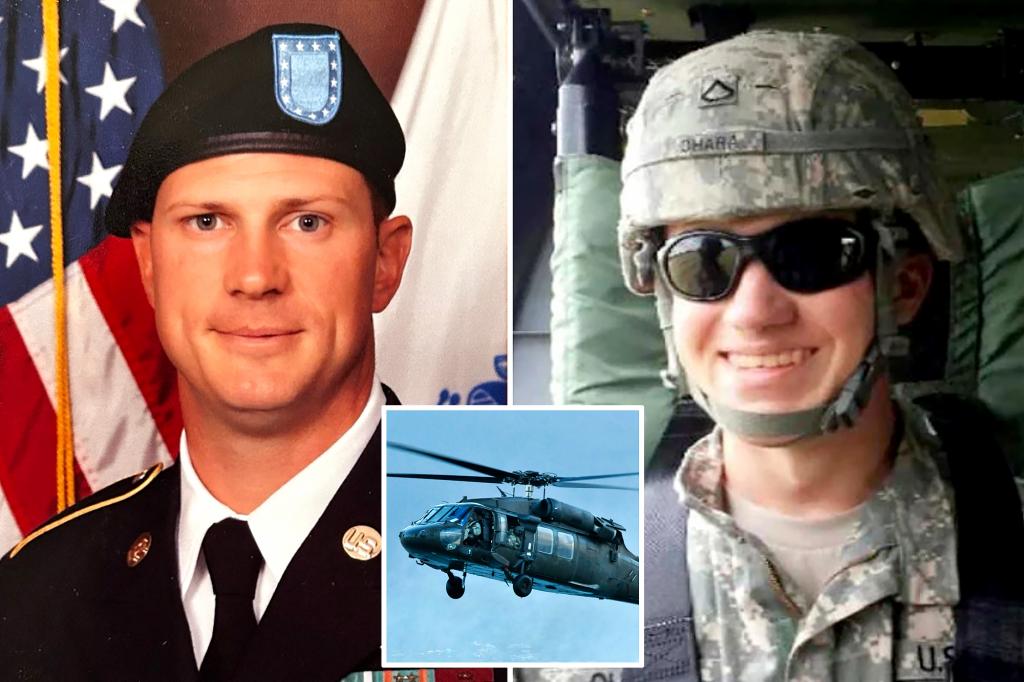The US Army has identified two of the three soldiers killed in a mid-air collision between a UH-60 Black Hawk helicopter and an American Airlines jet near Ronald Reagan Washington National Airport on Wednesday. The deceased are Staff Sgt. Ryan Austin O’Hara, 28, and Chief Warrant Officer 2 Andrew Loyd Eaves, 39. The identity of the third soldier, a female pilot, is being withheld at the request of her family. The tragic accident, which occurred over the Potomac River, claimed the lives of all three crew members aboard the helicopter and all 64 passengers and crew on the commercial airliner, totaling 67 fatalities. The Army has expressed its deepest condolences to the families and friends affected by this devastating event and has pledged its full support during this difficult period.
The investigation into the cause of the crash is ongoing. Preliminary reports suggest that the helicopter and the plane collided while the jet was on its final approach to the airport. The Black Hawk crew, consisting of two pilots and a crew chief, was conducting a routine training flight. Secretary of Defense Pete Hegseth described the Black Hawk crew as “fairly experienced,” and the Army has confirmed that both pilots had previously flown the same route at night. Eaves, the instructor pilot, had logged over 1,000 flight hours, while the unidentified female pilot had accumulated over 500 flight hours. Jonathan Koziol, chief of staff of the army’s aviation directorate, further emphasized their familiarity with the flight path, dismissing speculation that the crash was a result of inexperience or inadequate training.
One focal point of the investigation is the altitude of the helicopter at the time of the collision. Secretary Hegseth acknowledged that the Army is meticulously examining whether the Black Hawk was operating at the appropriate altitude. This crucial detail will help determine if the helicopter was inadvertently in the flight path of the approaching airliner. While the investigation is still in its early stages, authorities are committed to a thorough examination of all contributing factors to prevent similar tragedies in the future. The National Transportation Safety Board (NTSB) is leading the investigation, with the full cooperation of the Army and other relevant agencies.
Adding complexity to the unfolding tragedy is the public discourse surrounding the accident. Following the crash, former President Trump suggested that Diversity, Equity, and Inclusion (DEI) policies within the military might have played a role in the incident. However, this claim was swiftly refuted by Koziol, who explicitly stated that both pilots were experienced and familiar with the flight route. He emphasized that their training and qualifications met all necessary standards and that DEI policies had no bearing on the tragic event. This assertion underscores the critical need to base conclusions on factual evidence and avoid speculative pronouncements that could hinder the investigation and unfairly impact those involved.
The recovery efforts continue for the bodies of Chief Warrant Officer 2 Eaves and the female pilot. While Staff Sgt. O’Hara’s body was recovered shortly after the crash, the search for the remaining two crew members is ongoing. The Army, along with other agencies, is diligently working to locate and recover the missing personnel, providing closure to their grieving families. The challenging conditions of the Potomac River, coupled with the impact of the collision, have made the recovery operation complex and demanding, underscoring the commitment and dedication of those involved in the search.
The mid-air collision has prompted a wave of grief and condolences from across the nation and beyond. The loss of 67 lives, including military personnel and civilian passengers, has deeply affected communities nationwide. The Army, alongside other government officials, has expressed their profound sympathy for the families and friends of the victims. As the investigation unfolds, the focus remains on providing support to those affected, honoring the memory of those lost, and diligently seeking answers to prevent future tragedies. This tragic event serves as a stark reminder of the inherent risks associated with aviation and the importance of rigorous safety protocols and ongoing training to ensure the safety of both military personnel and civilian travelers. The commitment to a comprehensive and transparent investigation reflects the collective desire to learn from this heartbreaking incident and enhance aviation safety for all.

